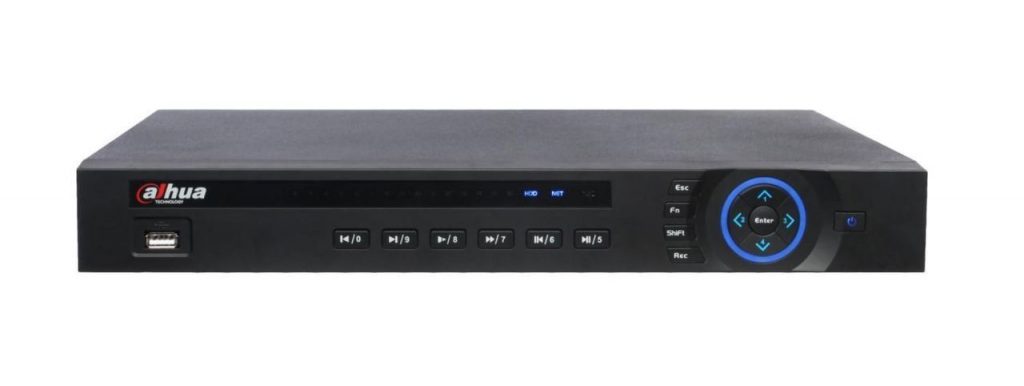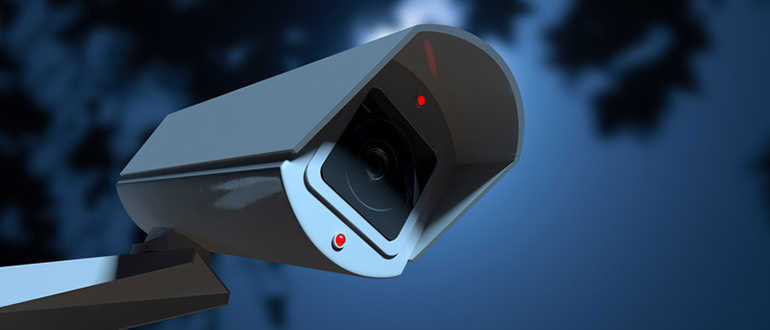
We know Video surveillance needs IP cameras to protect our security, but IP cameras are only a forward in the system. We also need video recorders.
Now there are DVR and NVR in the market for a long time. Recently, the XVR also is released. Do you know their differences?
In this post, let’s compare.
What is DVR?
DVR is a digital video recorder. Compared with traditional analog video recorders, it uses hard disk recording, so it is often referred to as a hard disk recorder.
It is a computer system for image storage and processing, with the functions of long-term recording, recording, remote monitoring and control of images/voices. DVR uses digital recording technology, and it is far superior to analog monitoring equipment in image processing, image storage, retrieval, backup, network transmission, remote control, etc. There are Dahua DVR, Hikvision DVR and more in the market.

What is NVR?
NVR, the short name of Network Video Recorder, is the storage and forwarding part of the network video surveillance system. NVR works with video encoders or network cameras to complete the video recording, storage and forwarding functions. The NVR technology application function mode is more flexible and can largely meet the functional requirements of today’s video surveillance systems. The small NVR solution with NVR technology as the core has the advantages of small scale, flexible operation, convenient use, economy and practicality. Its front end mainly cooperates with high-definition video cameras to support 8-channel 720P high-definition video image access. Centralized management and real-time storage of video and image information.
In addition, this small NVR solution can also support remote management of video images, preview analysis of video images, and real-time upload of video image data on Gigabit Ethernet ports, local preview, and video playback. The small NVR high-definition video solution has a high overall cost performance, simple system, and high operational flexibility. This small NVR high-definition video surveillance system is widely used in companies, factories, family villas, office premises, shops, supermarkets and other small areas of centralized video surveillance.
There are Dahua NVR, Uniview NVR, Hikvision NVR and more in the market.

What is XVR?
XVR is NVR + DVR, which can be switched freely. X is generally used to represent the unknown, representing infinite possibilities. With a very simple configuration, XVR can be transformed into a normal DVR, HDTVI DVR, hybrid DVR or even directly transformed into an NVR.
DVR vs. NVR vs. XVR
Because XVR is NVR + DVR, so we only need to compare DVR with NVR now.
The difference between DVR and NVR is one letter, but it determines the huge essential difference between them. DVR digitally encodes and compresses analog video and stores it on the hard disk. The “D” letter mainly refers to encoding and storage technology, and has little to do with network transmission. Therefore, DVR is usually installed nearby in the computer room near the analog camera. The NVR obtains the encoded and compressed video stream from the network and then stores and forwards it. The letter “N” refers to the network transmission. Therefore, we generally cannot see the direct connection of the video signal on the NVR device. Its input and output are both and encode and add IP data of network protocol.
- Independence
For NVR, the first difference with DVR is that NVR cannot work independently and form a system. NVR needs to be used in conjunction with the front-end IP camera or DVS to achieve storage and management of front-end video. For DVR, you can directly connect the analog camera for video acquisition, storage and management, and you can work independently as a system.

- Physical location
In practical applications, the deployment of NVR is flexible and not limited by physical location. NVR is not limited by the physical location of cameras, encoders and control centers, but only requires network connectivity. The main need to consider the network Reasonable distribution and deployment of video streaming broadband. DVR is directly linked to the analog camera, so the physical location is subject to the layout of the field device, usually need to be near the camera, audio equipment and auxiliary input and output equipment, and consider the transmission distance and signal transmission loss, there are certain limitations.
- HD
The NVR system is a truly digital, networked, and open system. It can achieve true high-definition storage and video forwarding with the front-end high-definition camera. If you need to achieve true high-definition, high-definition support is needed from video collection, encoding, compression, storage to display. The current implementation of high-definition is mainly achieved by the front-end “high-definition IP camera + NVR” method. The high-definition IP camera can generate millions of pixels of images, and then directly transmit, store, display or playback the network. The DVR system is restricted by the technology of the analog camera itself, the channel transmission bandwidth limitation and the chip processing limitation, and it cannot achieve true high-definition video, and supports up to D1 resolution.

- Openness
NVR adopts an open IP framework and needs to be used in conjunction with encoders, management platforms, operating systems, network transmission and storage devices to achieve complete functions. Therefore, the NVR has good integration capabilities. It is more convenient and flexible in terms of video interconnection and integration with alarm and access control systems. In addition, NVR can run on a common server and operating system. Therefore, it gradually breaks the proprietary and closed structure of equipment in the field of security monitoring and gradually merges with IT to facilitate user purchase and maintenance. In general, DVR systems generally have comprehensive functions such as video capture, encoding, compression, storage, and management, and can work independently from their own systems. Therefore, less consideration is given to compatibility between systems of different manufacturers and lack of “teamwork spirit”. Usually video encoding methods, network transmission protocols, video file systems, etc. are privatized, which is not conducive to integration
- Interface
DVR usually has a wealth of interfaces, including video input and output, audio input and output, PTZ control interface, alarm input and output interface, storage expansion interface, network interface, etc. These interfaces are basic and necessary for the DVR of its own system; and For NVR, its function is located in the storage and forwarding of video, and it is usually deployed as a “middleware” in the secondary computer room, which means away from the scene, away from all kinds of video and audio input and output, away from the alarm interface, and away from the workstation. The deployment of redundant interfaces means increased costs.

XVR can be used as DVR or NVR according to customer requirements. It does not have an absolute technical advantage, but it is flexible and can provide different functions according to needs. Now all major brands in the market have launched XVR, such as Hikvision XVR, Dahua XVR and so on. Users can go directly to these manufacturers to buy XVR equipment, or they can upgrade their DVR or NVR to XVR through officially provided software.
The above discussion of DVR, NVR and XVR is only to increase the reader’s understanding of the three products, not to argue which one is better. In fact, the three have different application advantages under different projects and different needs.
Related Topics:
5 Tips to Choose the Best IP Camera
What is the Video surveillance system? Four things you need to know!
13 Common Concepts of IP Cameras





